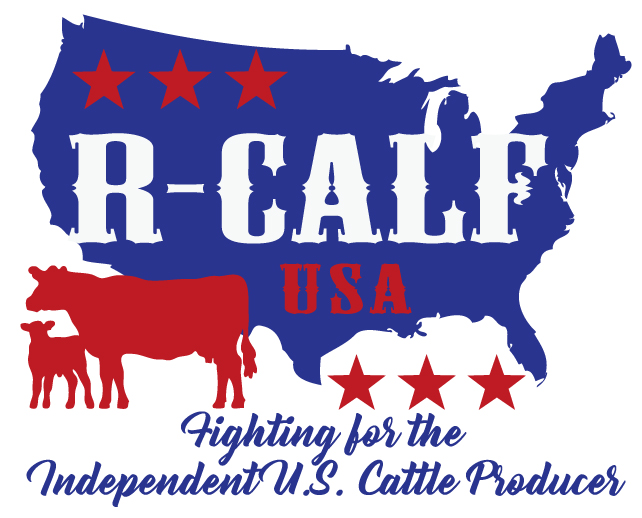R-CALF USA: Texas A&M Book Attacking 50/14 Based on Outdated and Non-Representative Data
Posted in Daily
 October 14, 2021 Billings, Mont. – Two days before last week’s Hearing to Review the State of the U.S. Livestock Industry held by the United States House Committee on Agriculture, Texas A&M University released its The U.S. Beef Supply Chain: Issues and Challenges, a 180-page document Texas A&M refers to as its “book.” In the wake of unprecedented turmoil within the U.S. cattle and beef supply chains marked by record-high consumer beef prices, beef shortages, record beef packer profits while prices paid to America’s cattle farmers and ranchers remain depressed, numerous antitrust lawsuits against the largest beef packers, and an ongoing investigation by the U.S. Department of Agriculture and U.S. Department of Justice, the Texas A&M book urges Congress to be cautious before taking steps to change the current structure of the nation’s cattle and beef markets, a structure the book asserts has “resulted in cattle producers capturing significant value over the last three decades.” More poignantly, the Texas A&M book urges Congress to use “extreme caution in making changes to a system that has grown organically over time to reward high-quality beef production in a way that acknowledges regional differences throughout the country.” The Texas A&M book expressly targets two prominent reforms introduced in Congress to improve the competitive structure of the nation’s cattle and beef markets: mandatory country of origin labeling (M-COOL) for beef, S.2716, and the bill introduced by Sens. Chuck Grassley (R-Iowa) and Jon Tester (D-Mont.) to require the largest beef packers to increase participation in the cattle industry’s price discovery market by purchasing at least 50% of their fed cattle in the cash market, S.949. In addition to deriding M-COOL for beef as a “detrimental policy,” the Texas A&M book claims billions of dollars in losses should Congress enact the Grassley/Tester cattle market protection bill or 50/14, S.949. Specifically, the book states cattle producers would largely bear the brunt of a $2.5 billion short-term and a $16 billion cumulative long-term negative impact if the largest beef packers were required to purchase at least 50% of their cattle needs from the cash market. But R-CALF USA says rather than to evaluate actual cattle market conditions prevalent during the past decade, Texas A&M chose instead to manipulate outdated and non-representative cattle market data to arrive at what the group characterizes as an outrageously baseless claim. “While the Texas A&M book admits the underlying data for its claim is over 15 years old, the outdated data itself was acknowledged by previous researchers to be collected during an “unusual time for the cattle and beef industries, rendering that data non-representative of past and present U.S. cattle market conditions,” said R-CALF USA CEO Bill Bullard. Bullard said the underlying data came from the U.S. Department of Agriculture’s 2007 Livestock and Meat Marketing Study and was collected between Oct. 2002 and March 2005. During this period, beginning in May 2003 and continuing through the March 2005 data collection endpoint, the U.S. border was unprecedently closed to imports of live Canadian cattle because of outbreaks of BSE (bovine spongiform encephalopathy or mad cow disease) in Canada. According to Bullard, domestic cattle prices and returns to cow/calf producers reached then record highs during this early 2000s data collection period, the volume of cattle purchased through formula contracts was significantly reduced, the cattle industry was transitioning from the end of its liquidation phase and beginning its expansion phase, and the percentage of fed cattle purchased in the cash market averaged about 60%. “This is arguably the U.S. cattle industry’s most non-representative period for which to collect data during anytime in the past 40 years, if not longer,” Bullard said. He explained that today’s marketplace is opposite – cattle prices and returns to cow/calf producers have been depressed for going on seven years, the volume of cattle purchased through formula contracts is historically high, the cattle industry is well into a liquidation phase, and the percentage of cash market sales is well less than half what it was over 15 years ago. He also said the 2007 study attempted to predict possible outcomes if the cash market were to increase above the 60% level, due to corresponding decreases in non-cash arrangements such as formula contracts that then represented a volume of only about 30%. But, he said, those 15-year-old market conditions are completely inappropriate for use as a basis to extrapolate possible outcomes of raising cash volumes from their current 20% level to only a 50% level. “It is disappointing that a land grant university would lobby Congress with conclusory assertions attained by conveniently using outdated and non-representative data in an effort to derail what is perhaps the most important reform for correcting the ills of the current marketplace. “We’ve witnessed this scenario several times during the past two decades. Each time cattle producers have offered meaningful marketplace reforms; a cadre of experts are enlisted to defend the status quo. Congress needs to see through this and take steps to fix our chronically dysfunctional market,” Bullard concluded. |
| # # # |
| R-CALF USA (Ranchers-Cattlemen Action Legal Fund United Stockgrowers of America) is the largest producer-only lobbying and trade association representing U.S. cattle producers. It is a national, nonprofit organization dedicated to ensuring the continued profitability and viability of the U.S. cattle industry. Visit www.r-calfusa.com or, call 406-252-2516 for more information. |